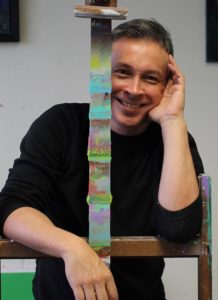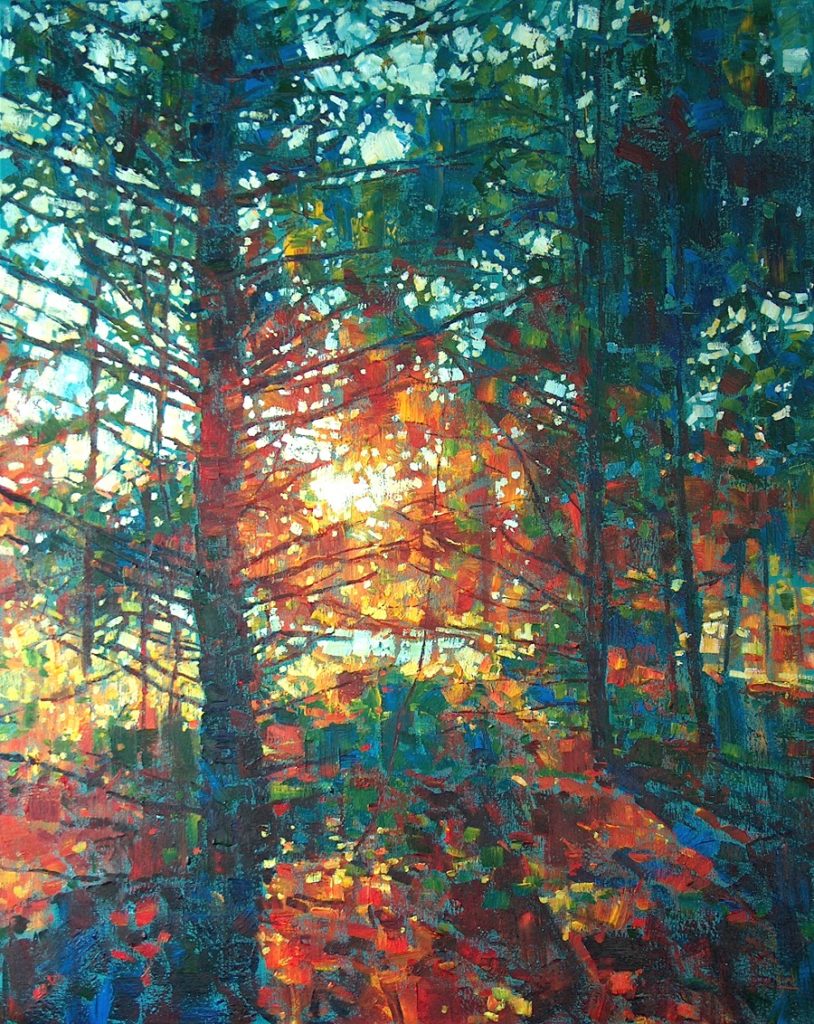Q&A with Artist Hashim Akib
This month we caught up with artist Hashim Akib for a Q&A session. Hashim has won many awards including the SAA (Society of All Artists) Artist of the Year award in 2009.
Hashib worked on the ad campaign for art manufacturer Daler Rowney in their relaunch of the System 3 Acrylic range. He has a new book out later this year published by Search Press entitled ‘Painting Portraits in Acrylics’. We stock his first book ‘Vibrant Acrylics’.

- Tell us about which artists influenced your work and how you started as an artist.
I’ve been influenced by lots of artists and I’m constantly discovering new ones. My go to artists are Van Gogh, Lucien Freud, Edward Hopper, Caravaggio. I also love the simplicity of Japanese prints and really interested in contemporary Chinese artists.
I began as an illustrator working for various magazines, newspapers, publishers and design agencies. I moved into painting for galleries to escape the tight deadlines and work off my own steam. The deadlines have remained but I love the diversity in the paintings I’m doing now.

- What is your favourite medium and why?
I mostly paint with heavy body acrylics. Their fast drying properties means paintings can be completed relatively quickly. My style is quite expressive so the momentum behind the process is very important. Practically all my contemporaries at college were using oils so I bagged acrylic to be different.

- Which kinds of paints do you use and why?
I’ve tried almost every brand of acrylics and each one has its strengths. Cost is something to take into account, I run painting workshops so tend to initially recommend student ranges such as Daler Rowney System 3. Royal Talens Amsterdam Expert acrylics are a reasonably priced artist quality paint, with Golden Acrylics at the higher price bracket but great quality.

- Do you have any advice or tips for artists who are trying to master painting with acrylics?
The most common mistake many amateur painters make with acrylic is forcing them to behave like watercolour or oils. Over diluting with water or over blending dulls the colour so a simple understanding of the advantage of painting with acrylics does help. Try applications of neater paint with more decisive strokes, it takes practise but worth the effort for more luminous paintings. Mediums and retarders are available but beginners should keep it simple to start with and just get to know the paints and colours.
- What is a day in the life of a professional artist like?
I start and finish my day with admin, emails mainly or writing articles or if a new book is in the works, which there is. In between spells at a computer screen I’m at the easel looking at canvas and hopefully painting. I travel a lot for galleries, occasionally demonstrate art techniques or running a workshop.

- How do you begin your paintings? Do you have a set method or does your technique vary from painting to painting?
Rather than a technique I have a philosophy that dictates the process. I like realism but with the minimum of marks. I use the same idea for portraits as for street scenes and although I have a style there are variations in the marks or colours I use.
- Do you have any formal training or are you self-taught?
I did attend art college but found it far from a rewarding experience, certainly if you wanted a career in the arts. There was a complete lack of practical education in pricing, working to commissions, painting to a timescale or dealing with artistic block. I learnt more in my first six months after leaving college then the entire time I spent there.

- How long do you spend on an average painting? What is the longest that you have ever spent on a painting?
Generally, I spend three days on each painting but the ideas stage or reference gathering takes longer. I work from my own photos and sketches so that can be very time consuming. My first self portrait took about a month and a half, working from life with a stark spotlight and mouth wide open with my tongue sticking out. Unfortunately, my style at the time was very detailed obsessed.

- Which painting of yours are you most proud of, or consider a particular favourite? What achievement are you most proud of?
I have a soft spot for a demonstration painting I did that took 45mins of my cat who had passed away of diabetes two weeks before. It’s one I’ll always keep and currently resides on my studio wall. I’m most proud of my first book ‘Vibrant Acrylics’ as writing and stringing coherent sentences together was always a problem at school and in general. My fourth book is released later this year.

- Can you talk us through your thought process or story behind one of your pieces of art?
I paint a lot of street scenes and really like the scale of man made structures against normally small figures. Lighting or weather conditions add to the interest so I always find plenty to get me going. The process in depicting them is a matter of resource gathering, I’ll visit Manchester or Barcelona to get a feel for the location and take plenty of snaps. Back in the studio I dive straight in either with a simple drawing on canvas or direct with paint. At any one time I’ll be working on two or three paintings to avoid tunnel vision. The first hour or two is vital and 70% of the painting is complete at this stage. The tightening or sparking up the image can be much more drawn out as choices are made as to what to add or leave out.
- Which elements of painting do you find the most tricky? Are there any elements that you feel you have yet to master?
So many I’ve yet to master and even when you feel you’re getting some where it can so easily go wrong. Everything can be tricky depending on the conditions you place on the process. Avoiding the ‘norm’ in painting is the trickiest, for example, most traditional landscape artists start with the background, middle ground and end with the foreground or wildlife artists who depict every feather. Just try to avoid such a well trodden path.

- When you are painting, do you prefer to capture fine detail or work in a more abstract manner?
I like detail as a showcase for skill but I much prefer a more impressionistic look. Detail can be off putting conceptually as it sledgehammers the points across. Abstract is such a broad term and although I have my favourites, there are an awful lot of bad abstracts.
- What’s your favourite place or person that you have painted? Why?
So difficult as there are so many. It’s great painting older faces for the character or a location you’ve loved visiting. The first series of paintings I did of historical London markets was great fun and an amazing experience. Just about every painting I did sold so good financially as well.

- What location/landscape/portrait would you love to have the opportunity to paint? Why?
I’m planning a trip to Malaysia in the near future as my Father is Malay. I spent time as a child there as well and I would like to visit and paint parts of the rainforest or lush green padi fields and urban centres.
To see more of Rashim Akib’s work visit his website: hashimakib.co.uk










Love Tom just watch this man to paint. He’s amazing
So good to hear more about you Hash, and your inner feelings regarding working with acrylics. I too, now work with acrylics, and have turned out some successful paintings. I’m selling more acrylics than I ever did with my oil paintings, and have four exhibitions at Denbies Vineyard in Dorking this year.
Its been a long time since you painted me in your demo at Epsom & Ewell Art Group.
I still haven’t forgiven you for not selling me the demo though. 🤣😄
I wish you well in all you do. You’re a nice guy Hash and deserve to do well.
Barbs Chapman. (Facebook)